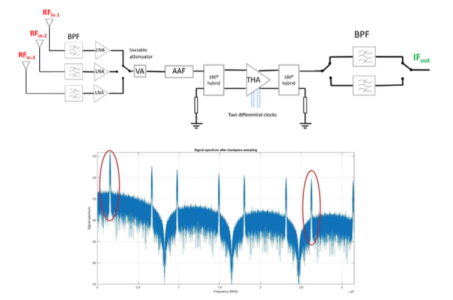New Microwave Sampling Concepts for Future TT&C Architectures

In summary, this activity used simulated and analysed parameters for each component to define the requirements for each application. For the flight model, the most important parameters are power consumption, cost and mass of the components. The power consumption and mass of components are acquired from the datasheets. Since space qualification is needed for these components the cost estimation is a difficult task. For example, even for the passive component the price difference between non-qualified, qualifiable and qualified devices is rather high.
In this document, we tried to fairly estimate the price for either qualifiable or qualified components. The THA-based technology is analysed in details as the best match for flexible frequency conversion technology. The main results based on this architecture are listed as follows:
- Broadband frequency conversion solution up to 25 GHz using existing technology
- Up to 4 GHz sampling frequency
- Down and up conversion from S, X and K band is possible to the IF frequency
- Power consumption and noise folding should be carefully considered
For upconversion, high speed RF DACs are a suitable solution up to X-band. For the ground station, the similar analyses are done and commercially available components are listed. For these devices the price range is estimated from the acquired datasheets and quotes. Here, the power consumption is not a big issue and can be a secondary priority. Since the space qualification is not required for these devices, the price range is considerably lower than the flight ones. Ka-bands transceiver are becoming demanding bands for satellite communication. More data bandwidth and data channels are possible in these frequency ranges. However, as mentioned throughout this document, standing alone electronic approach faces difficulties to cope with the frequency requirement. On the other hand, optical inter-satellite link is getting lot of attention because of its distinct advantages, such as transmission security, high throughout and its power and mass saving capability.
